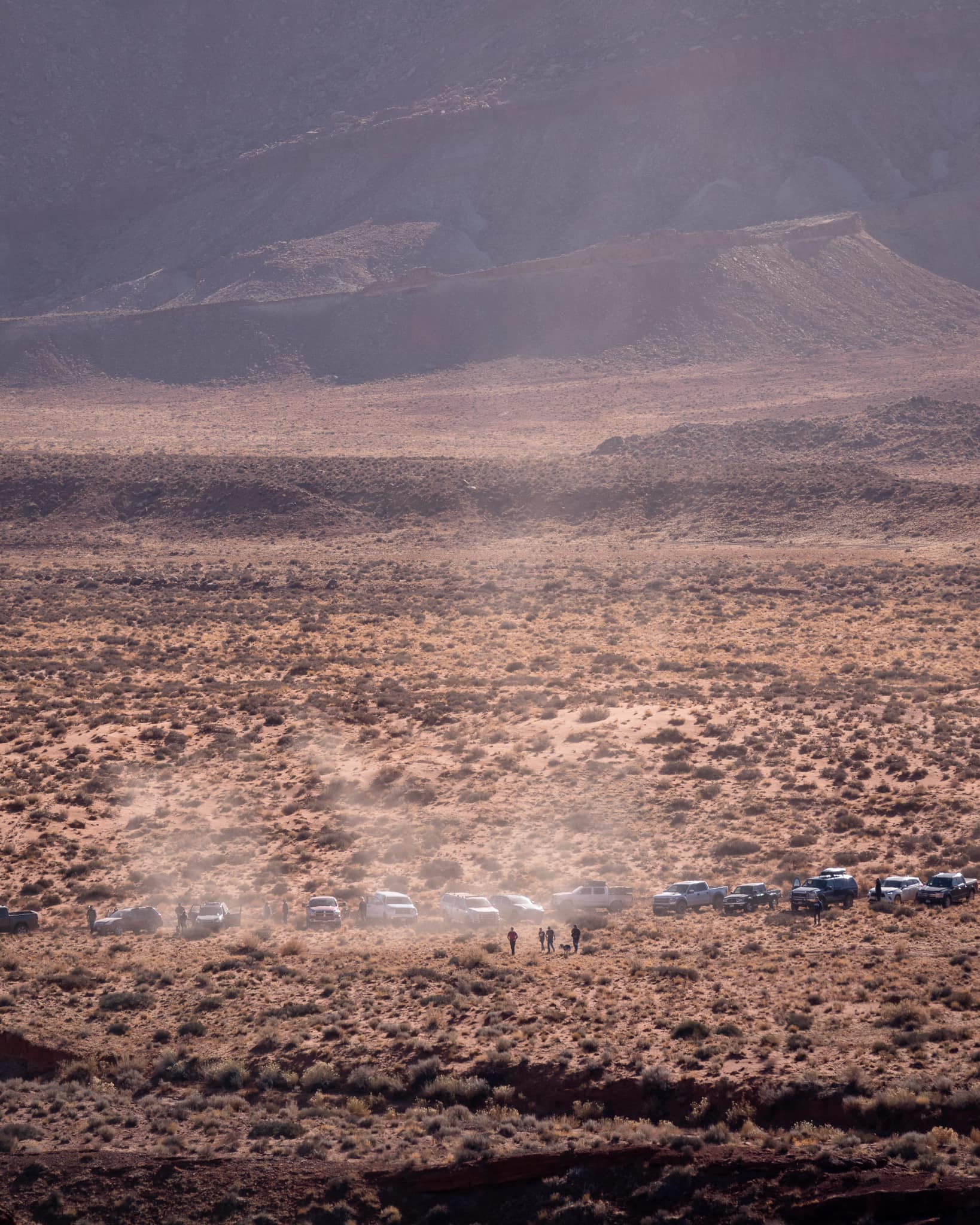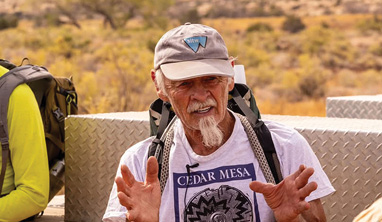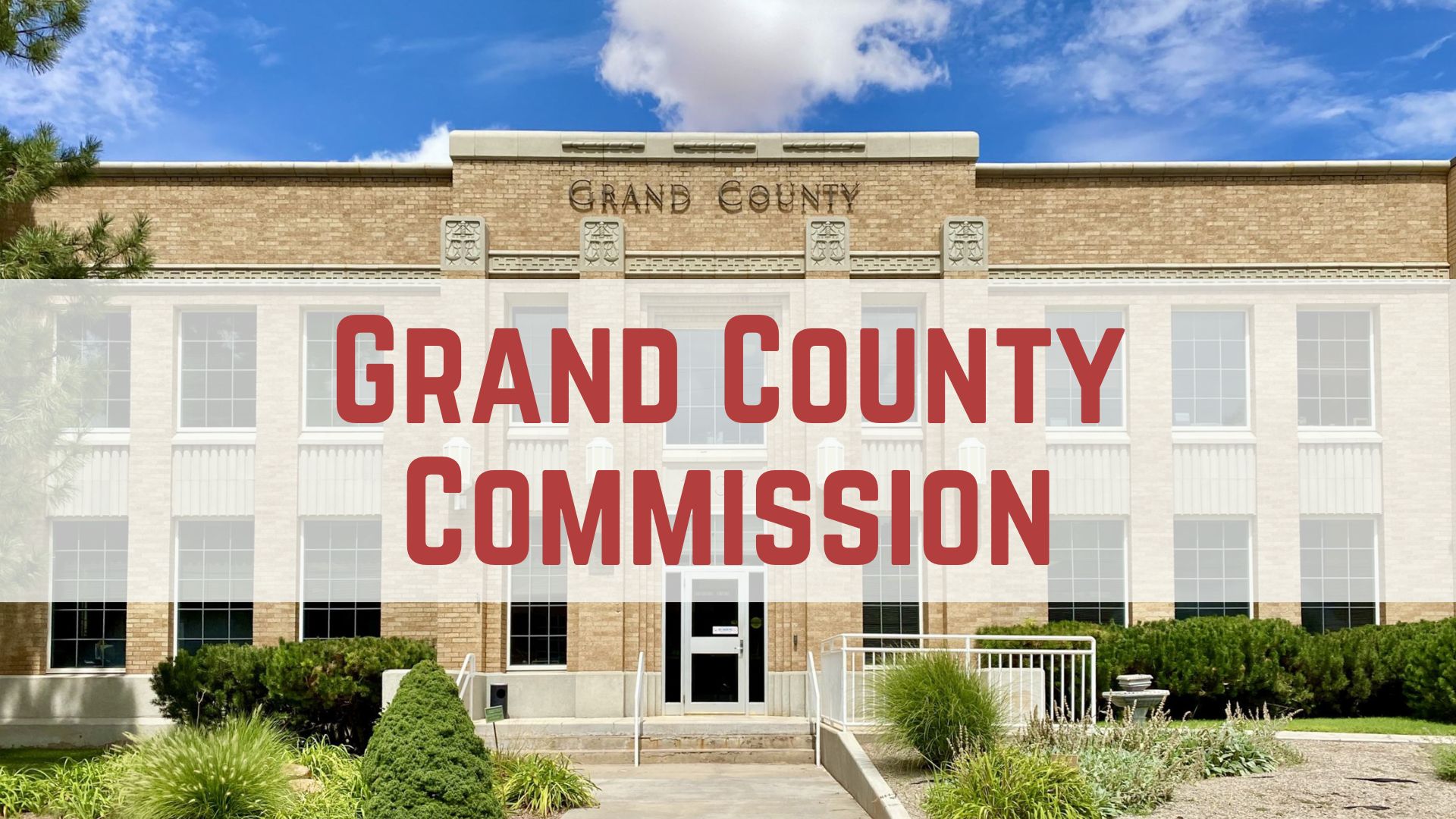Some information may be outdated.
“I was definitely one of the people who came out to Utah specifically to see this monolith,” Ross Bernards, a Vail, Colorado-based photographer and drone pilot, told the Moab Sun News.
What he didn’t expect was to be among the last to see it standing.
Bernards joined the hundreds of people who flocked to an isolated area south of Moab after Utah Department of Public Safety officials publicized finding an illegally installed metal sculpture in the desert on Nov. 18.
In just 10 days, the tall, shiny, mirror-like triangular prism garnered intense levels of national and international interest and sparked a range of theories on its creation, from aliens to artists, as well as creating consternation about the heavy impact of visitors, some of whom arrived in private helicopters and small planes, on the area. The monolith was knocked down and removed by a group of men, reportedly Moab locals, on Nov. 27.
While DPS officials did not disclose the exact location of the structure, fearing that large crowds would flock to this remote area, online sleuths pinpointed the spot and released the geocoordinate within 48 hours.
BLM released an official statement regarding the monolith on Nov. 24, stating that “the Bureau of Land Management would like to remind public land visitors that using, occupying, or developing the public lands or their resources without a required authorization is illegal, no matter what planet you are from.”
“There’s no parking. There’s no restrooms. The site is not developed for high use public recreation like a lot of the other sites in the Monticello Field Office,” said Kimberly Finch, the Communications Director for the Bureau of Land Management’s Utah State Office. “A large number of people went out to a site that wasn’t prepared to handle that.”
Visitors’ parked cars damaged rare vegetation and the natural site was polluted with human waste and trash. Local tow companies were called on numerous occasions to dislodge passenger vehicles from the rough terrain. The lack of cell service also made the monolith’s location a hazard for tourists, who often lack the skills needed to navigate Utah’s dry public lands.
Bernards saw this human damage firsthand. When he hiked to an overlook above the monolith’s location on Saturday morning, he said that he saw roughly 80 cars arrive at the site and even more people haphazardly making their way across the previously rugged land.
“There were so many unintended consequences of this — there was so much damage done,” said Bernards.
“I thought it would be a cool place to practice flying my drone,” Bernards said, so he and a few friends drove to Moab and arrived at the monolith’s makeshift trailhead on Friday night.
As they were leaving, they witnessed a group of four other visitors approaching.
“I hope you got your photos,” one commented, according to Bernards.
The newcomers began leaning their weight against the monolith until the structure popped out of slots cut into the sandstone. The group dismantled it and placed the fragmented structure in a wheelbarrow they had brought with them. Bernards said the effort took less than 8 minutes.
“‘This is why you don’t leave trash in the desert,’ I remember them saying as they left,” said Bernard.
“We didn’t know who they were, but we agreed with them and what they were doing,” Bernards said of the monolith’s removers. “The monolith was causing a significant impact on the environment over there. It definitely needed to come out.”
Moab locals Andy Lewis and Sylvan Christensen ostensibly felt the same. The two adventure content creators posted footage of themselves and others removing the monolith to social media accounts on Tuesday.
“Don’t abandon your personal property on public land if you don’t want it to be taken out,” read Christensen’s Instagram caption, along with the hashtag #LeaveNoTrace.
Lewis himself has been the subject of local criticism for internet-driven stunts on public lands. In 2017, Lewis—known online as “Sketchy Andy”—was part of a group that decorated Ancient Art, an iconic summit in the Fisher Towers area, with Christmas decorations for a photo series. Local climbers criticized the stunt for leaving behind glitter and refuse at the site.
Contacted by the Moab Sun News, Lewis did not respond to requests for comment.
“While we take all reports of crime seriously, we do not have the proper resources to devote much time to the appearance and subsequent disappearance/theft of the structure that was discovered in a remote area of public lands within our county,” a statement released by the San Juan County Sheriff’s Office reads.
The monolith’s appearance and disappearance have attracted opinions on all sides. While some saw the monolith as an inspiring, mysterious piece of art that should only have been removed by officials if at all, others argued that the damage done to the environment outweighed other concerns.
“We have actually really enjoyed some of the comments and conversations we’ve had with people because it has been a really fun topic to talk about,” Finch said. “But this is an illegal activity. We don’t want any copycats or people to be inspired to do this kind of thing on public lands.”
Though Utah’s monolith is gone, speculations still run wild. Reports of a second, identical structure popping up in Romania are a new point of interest, and many still believe the monolith was the result of extraterrestrial activity. Ripley’s Believe It or Not! is even offering a $10,000 reward to anyone who comes forward with information about the monolith.
But for Bernards, whose phone hasn’t stopped ringing since he returned to Vail, there’s only one takeaway: “Art is cool, but art should be where art should be. Mother Nature is the artist in the wild.”
Sculpture removed after intense visitation to local site
“A large number of people went out to a site that wasn’t prepared to handle that.”
– Kimberly Finch
Appreciate the coverage? Help keep local news alive.
Chip in to support the Moab Sun News.





